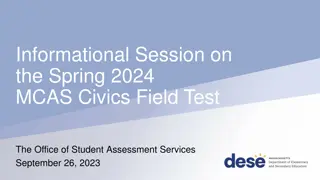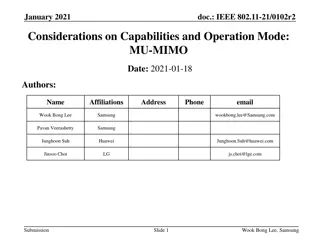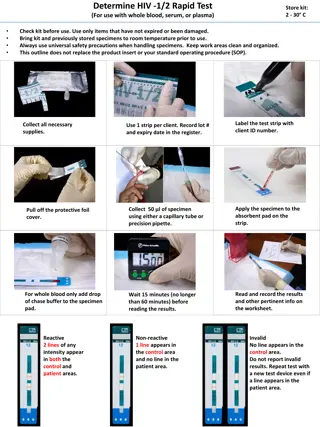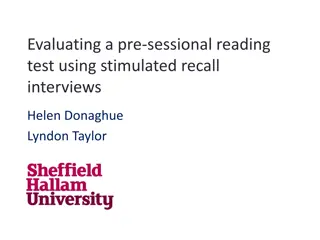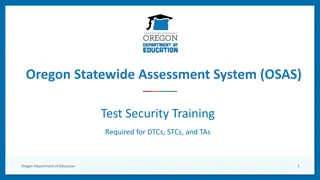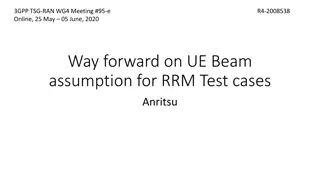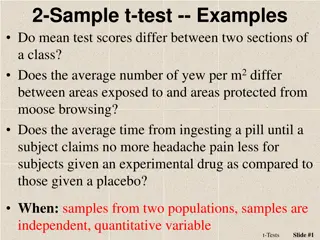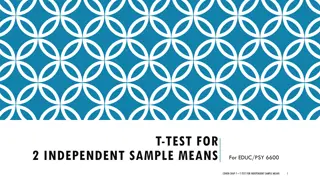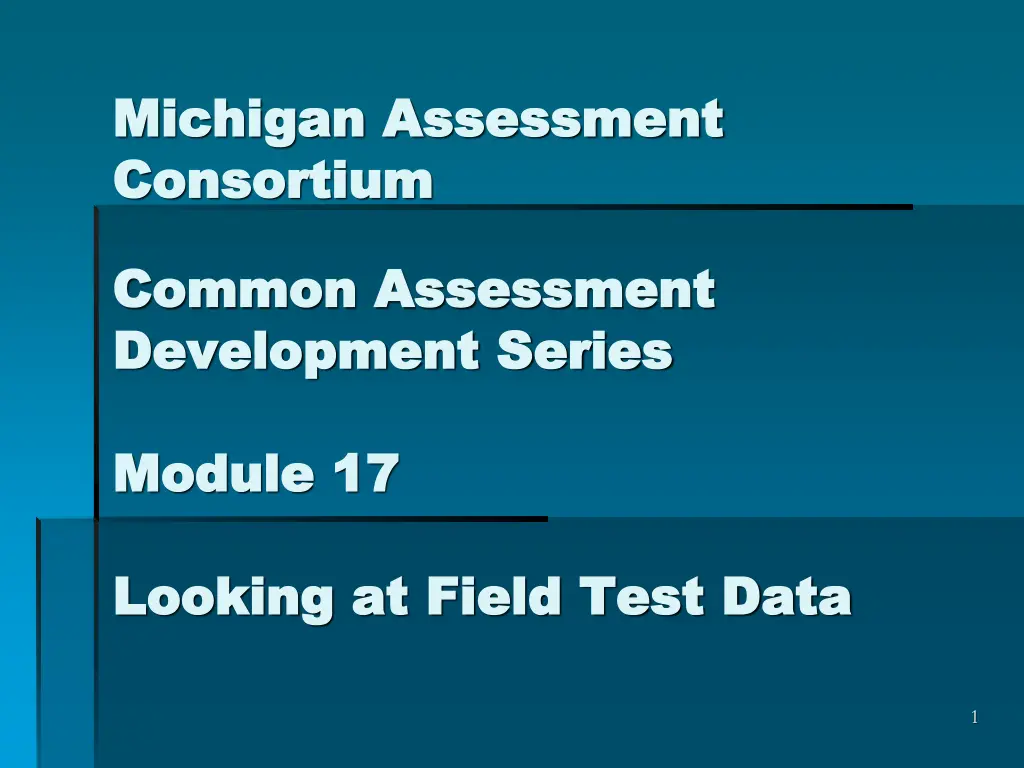
Field Test Data Analysis for Michigan Assessment Consortium Development Series Module 17
Explore field test data analysis techniques in the Michigan Assessment Consortium Development Series Module 17 with Jim Gullen from Oakland Schools. Learn to assess overall student performance, create frequency distributions, and interpret student scores effectively.
Download Presentation

Please find below an Image/Link to download the presentation.
The content on the website is provided AS IS for your information and personal use only. It may not be sold, licensed, or shared on other websites without obtaining consent from the author. If you encounter any issues during the download, it is possible that the publisher has removed the file from their server.
You are allowed to download the files provided on this website for personal or commercial use, subject to the condition that they are used lawfully. All files are the property of their respective owners.
The content on the website is provided AS IS for your information and personal use only. It may not be sold, licensed, or shared on other websites without obtaining consent from the author.
E N D
Presentation Transcript
Michigan Assessment Michigan Assessment Consortium Consortium Common Assessment Common Assessment Development Series Development Series Module 17 Module 17 Looking at Field Test Data Looking at Field Test Data 1
Narrated By: Narrated By: Jim Gullen Oakland Schools 2
Previous Modules Previous Modules Previously, you have: Developed your test blueprint Written your test Students have taken your test Begun to look at editing the items to improve them 3
Field Test Information Field Test Information There are several types of information field testing can provide: Level of overall student performance Item analyses Item Discrimination Differential item functioning Don t worry if you don t understand these. This module will teach you and no Greek is involved! 4
Overall Performance Overall Performance In order to look at the overall performance on the test, you will need to Use the answer key to score each student s exam Use the scoring rubrics to score students responses to constructed-response items Add up each student s score to all items to get the total raw score for each student 5
Frequency Distribution Frequency Distribution To look at all of the students scores, construct a frequency distribution such as this: Score Range Number of Scores 60-65 54-59 48-53 42-47 6
Frequency Distribution Frequency Distribution Put a mark next to the score range that each student s score falls into, as shown here: Score Range Number of Scores 60-65 III 54-59 II 48-53 IIII 42-47 III 7
Frequency Distribution Frequency Distribution It is best to use about 8 to 12 score intervals in your frequency distribution When you are all done, it might look like the sample on the next page 8
Sample Frequency Distribution Sample Frequency Distribution Score Range 60-64 54-59 48-53 42-47 36-41 30-35 24-29 18-23 12-17 6-11 Number of Students 4 6 9 11 7 12 5 3 2 2 9
Sample Frequency Distribution Sample Frequency Distribution Score Range 60-64 54-59 48-53 42-47 36-41 30-35 24-29 18-23 12-17 6-11 Number of Students 9 11 10 10 8 4 4 3 1 1 10
Sample Frequency Distribution Sample Frequency Distribution Score Range 60-64 54-59 48-53 42-47 36-41 30-35 24-29 18-23 12-17 6-11 Number of Students 1 1 3 4 4 8 10 10 11 9 11
Sample Frequency Distribution Sample Frequency Distribution Score Range 60-64 54-59 48-53 42-47 36-41 30-35 24-29 18-23 12-17 6-11 Number of Students 4 6 9 11 7 12 5 3 2 2 12
Difficulty Level of the Test Difficulty Level of the Test To judge the difficulty of the test, look at where most of the scores fall: If near the top of the distribution, then it is a fairly easy test If near the bottom of the distribution, then it is a fairly hard test Does the difficulty level surprise you? If so, then you might want to investigate whether there is something wrong 13
Item Analysis Item Analysis Scanning your test into a computer with test scoring software or administering a test online makes this much easier! Item analyses are run to investigate whether there might be specific items that are contributing to the difficulty of the test. We first look at item difficulty 14
Item Difficulty Item Difficulty 7 Students Correct 10 Total Test Takers Item Difficulty = = .70 Typically we want item difficulties to be between .35 and .9
Item Response Patterns Item Response Patterns A B C D Omit Mult Question 1: 46%* 47% 2% 1% 0% 4% Question 1: What is the BEST Ice Cream Flavor? A. Vanilla B. Chocolate C. Garlic D. Lima Bean
Item Response Patterns Item Response Patterns A B C D Omit Mult Question 1: 24% 26%* 25% 24% 1% 0% Question 1: What is the BEST Fit Index for structural equation models? A. GFI B. TLI C. RMSEA D. SRMR
Item Discrimination Range: -1 to +1 Values closer to +1 are better Negative values indicate a problem!
Were looking for: Discriminations > 0
Item Discrimination Item Discrimination Item discrimination can be done by hand There are several steps to the process: 1. Arrange the student total scores in order from highest to lowest (Example: 120 students) 2. Select the students in the top and bottom quarter (25%) of the students (Example: top and bottom 30 students in this sample) 21
Item Discrimination Item Discrimination There are several steps to the process: 3. Compute the percentage of students in the top and in the bottom groups who passed each test item (Example: Top group: 28/30 passed = 93% passing; Bottom group: 7/30 passed = 23%) 4. The upper group should have outscored the bottom group on every test item, by a large or small margin 22
Item Discrimination Item Discrimination The items to look at most carefully are the ones where the lower group (based on total scores) outscored the upper group in other words, the students who knew less overall did better on this item The item has a flaw in it, something that was attractive to the better-prepared students Look at how many chose A, B, C or D Edit or delete the item 23
Differential Item Functioning Differential Item Functioning This is a fancy phrase for looking at whether different subgroups do differently on each item on the test This is similar analysis to the upper-lower group analysis, except we are looking at the performance of all of the members of different sub-groups 24
Differential Item Functioning Differential Item Functioning There are several important subgroups to examine: Racial-ethnic groups Gender Students who did or did not take a course for which you have written an end-of-course test, for example 25
Differential Item Functioning Differential Item Functioning In each case, you need to determine how many students in each subgroup passed the test item Don t try too many comparisons at once. In a sample of 120 students, try only 2 or 3 comparisons The goal is to have roughly equal-sized subgroups 26
Differential Item Functioning Differential Item Functioning Once you have each sub-group s passing rate, compare the groups Are they about the same? If yes, there is little or no differential item functioning or DIF If the difference is 10%, 15% or more, favoring one group over another, then the item is said to have DIF Is the difference due to opportunity to learn differences or item bias? 27
Test Analyses Test Analyses You might wonder whether you need to carry out all analyses on all of your test items that you field tested. The answer is that it depends, on: Your sample size small samples will prevent most useful analyses If the stakes for your test are high (e.g., course credit or grades), you should look at your entire exam 28
Test Analyses Test Analyses This module presented some of the basic analyses you could carry out yourself If you have access to test scoring software, these analyses can be done routinely, and other analyses carried out as well Carrying out these analyses will help you create good tests 29
Series Developers Kathy Dewsbury White, Ingham ISD Bruce Fay, Wayne RESA Jim Gullen, Oakland Schools Julie McDaniel, Oakland Schools Edward Roeber, MSU Ellen Vorenkamp, Wayne RESA Kim Young, Ionia County ISD/MDE 30
Development Support for the Assessment Series The MAC Common Assessment Development Series is funded in part by the Michigan Association of Intermediate School Administrators In cooperation with Michigan Department of Education Ingham and Ionia ISDs, Oakland Schools, and Wayne RESA Michigan State University 31


